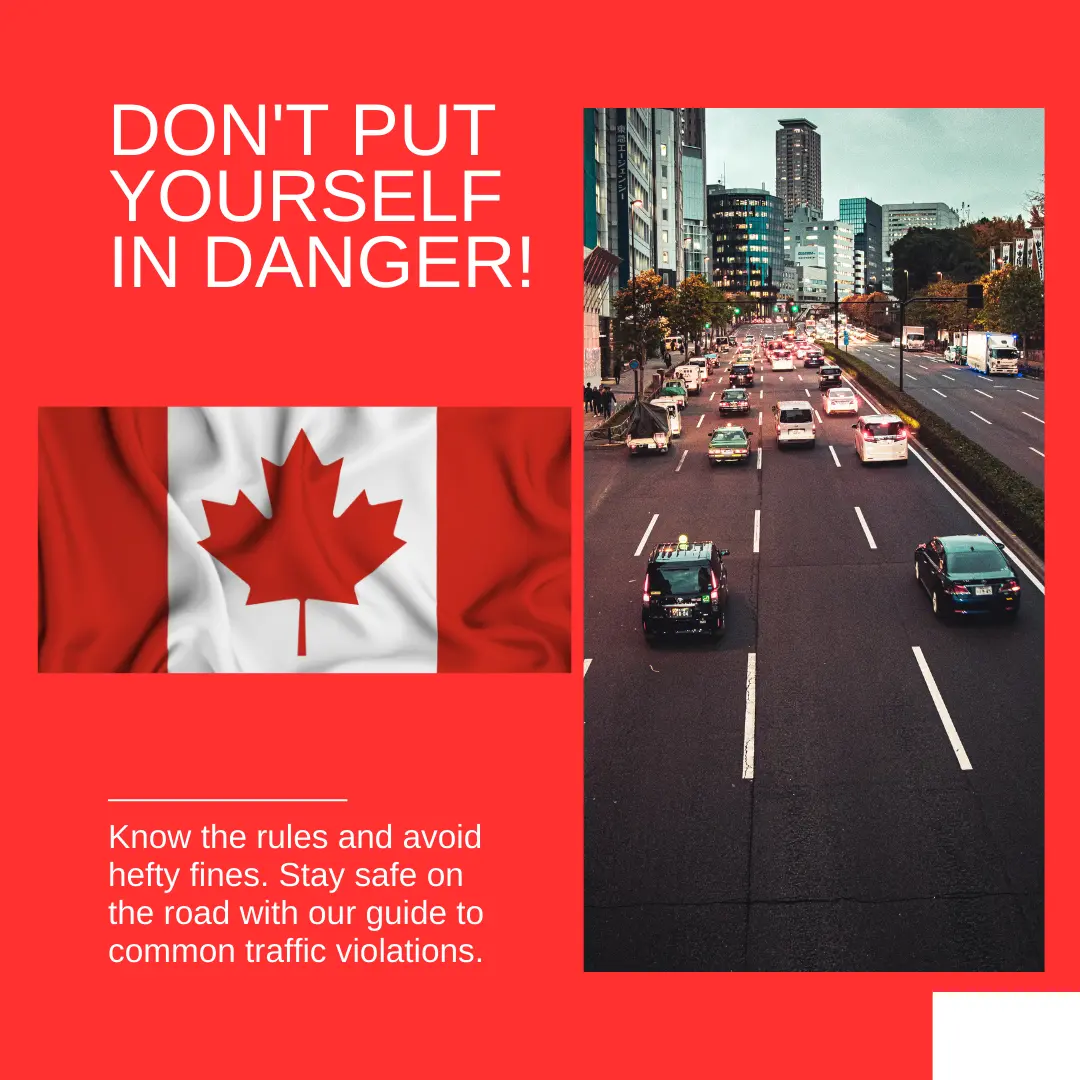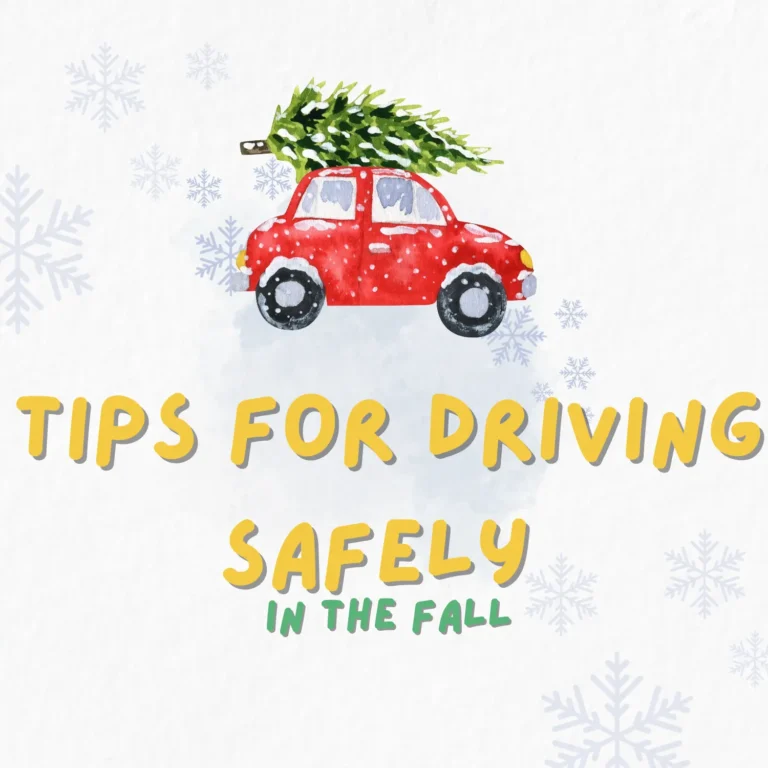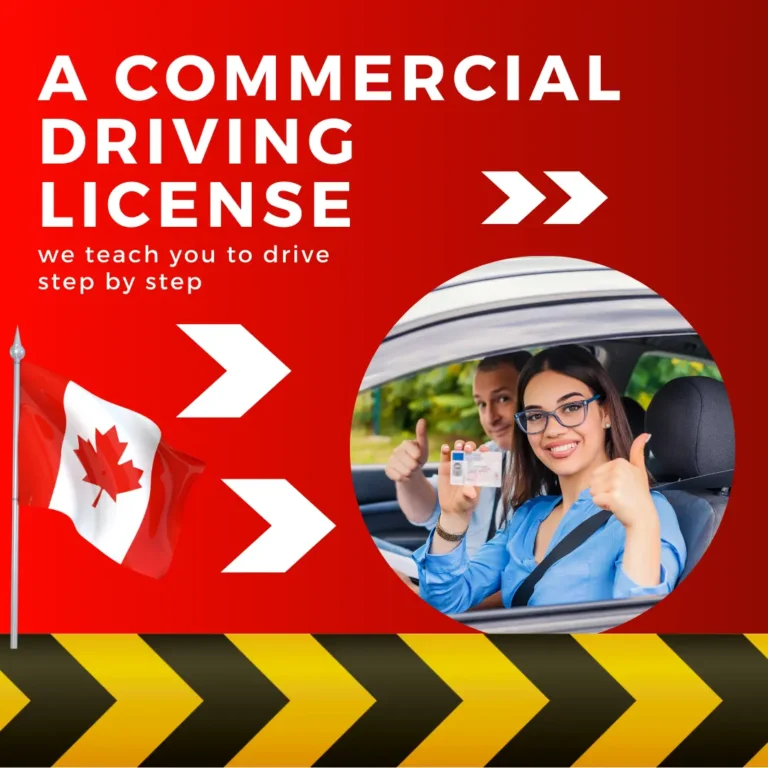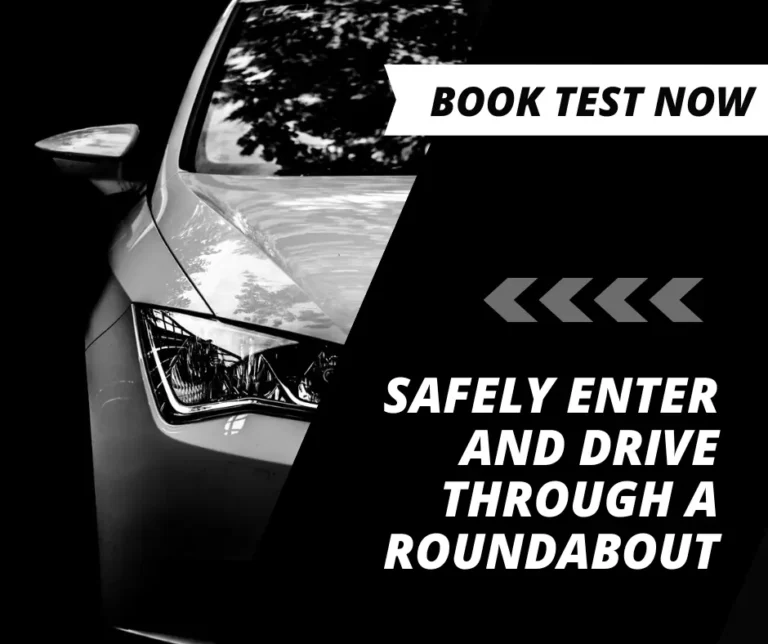Road Rules and Fines in Canada
In Canada, road rules and fines are vital to the overall safety of our roads. They are designed to provide a broad framework for protecting the health and safety of everyone who uses the transportation system. Safety measures are in place to reduce the risk of accidents. Financing and penalties can be used as deterrents against dangerous behavior. They discourage activities such as distracted driving, speeding, or impaired driving. The road rules promote a sense of responsibility in drivers by holding them accountable through the legal system. With slight differences between the provinces allowed, these road rules are uniform and create a predictable driving environment. The road rules in Canada and the fines they impose are vital tools that help maintain an organized and safe transportation system.
List of 50 Road Rules and Fines in Canada
Road rules and fines in Canada might be exhaustive and unnecessary, as many rules and fines overlap or are specific to certain circumstances or regions. However, here’s a more expanded list covering various common road rules and fines:
| Road Rule | Fine (CAD) |
|---|---|
| Speeding | Varies by speed exceeded |
| Running a red light | $325 |
| Texting while driving | $490 + demerit points |
| Not wearing a seatbelt | $175 (per person) |
| Driving without insurance | Varies by province |
| Driving under the influence of alcohol | Varies by BAC level |
| Failure to yield | $110 – $500 |
| Improper lane change | $110 – $325 |
| Using a handheld device while driving | $280 – $1000 |
| Failure to stop for a school bus | $400 – $2000 |
| Illegal parking | Varies by violation |
| Failure to signal | $110 – $325 |
| Tailgating | $110 – $400 |
| Running a stop sign | $325 |
| Failure to obey traffic signs or signals | Varies by violation |
| Failure to stop for pedestrians at crosswalks | $500 – $2000 |
| Speeding in a school zone | Doubled fines |
| Driving without headlights at night | $110 – $200 |
| Illegal U-turn | $110 – $200 |
| Driving with a suspended or revoked license | Varies by province |
| Racing on public roads | $500 – $10,000 |
| Passing a stopped school bus | $400 – $2000 |
| Failure to properly restrain a child in a vehicle | $200 – $1000 |
| Failure to use winter tires (in some provinces) | $200 – $1000 |
| Speeding in a construction zone | Doubled fines |
| Impaired driving causing bodily harm | Varies by case |
| Driving with expired registration | Varies by province |
| Disobeying traffic control devices | $110 – $500 |
| Excessive noise violations | $110 – $500 |
| Driving with obstructed view | $110 – $400 |
| Failure to maintain a safe distance | $110 – $400 |
| Driving with a cracked windshield | $110 – $400 |
| Parking in a handicap zone without permit | $300 – $500 |
| Driving without valid vehicle registration | Varies by province |
| Failing to properly yield to emergency vehicles | $400 – $2000 |
| Failure to properly secure a load | $200 – $1000 |
| Speeding in a residential area | Varies by municipality |
| Failure to give cyclists enough space | $110 – $500 |
| Driving with expired insurance | Varies by province |
| Driving with an obstructed license plate | $110 – $400 |
| Failure to use headlights in poor visibility | $110 – $200 |
| Driving without proper vehicle documentation | Varies by province |
| Not stopping for a pedestrian at a crosswalk | $500 – $2000 |
| Driving with an unsecured pet in the vehicle | $110 – $400 |
| Failure to provide a breath sample (impaired driving) | Varies by case |
| Ignoring railroad crossing signals | $200 – $1000 |
| Driving too slowly | $110 – $400 |
| Failure to yield to emergency vehicles | $110 – $500 |
Please note that fines and penalties may vary by province or territory, and this list is not exhaustive. Always refer to official sources or consult with local authorities for the most accurate and up-to-date information.
To access road fines and rules in Canada, you can visit the official websites of the respective provincial or territorial government responsible for transportation and traffic regulations. Here are the websites for each province and territory:
- Alberta: Alberta Transportation
- British Columbia: ICBC – Road Safety
- Manitoba: Manitoba Public Insurance – Traffic Safety
- New Brunswick: Service New Brunswick – Road Safety
- Newfoundland and Labrador: Service NL – Highway Safety
- Northwest Territories: Government of the Northwest Territories – Transportation
- Nova Scotia: Government of Nova Scotia – Transportation and Infrastructure Renewal
- Nunavut: Government of Nunavut – Transportation
- Ontario: Ministry of Transportation – Road Safety
- Prince Edward Island: Department of Transportation and Infrastructure – Road Safety
- Quebec: Société de l’assurance automobile du Québec (SAAQ) – Road Safety
- Saskatchewan: SGI – Traffic Safety
- Yukon: Government of Yukon – Highways and Public Works
These websites should provide comprehensive information on road rules, regulations, fines, and other relevant information pertaining to driving in Canada. Always ensure to refer to official government sources for the most accurate and up-to-date information.
Highway Code: Road Rules and Fines
Canada doesn’t have one “highway code.”. Instead, traffic laws and regulations in Canada are the sole responsibility of each province and territory. The traffic laws of each province or territory are different. Each uses a unique set of road rules and fines. In terms of the road safety principle, however, certain things are common across Canada. Here are a few general guidelines found commonly in Canadian highway codes. There are some commonalities in the Canadian highway code based on road safety principles. These are some of the general rules that can be found in Canadian Highway Codes:
Signs and Signals:
All drivers are expected to follow traffic signs and signals. They include stop signs and yield signs, as well as speed limit signs. The signs and signals are essential in the regulation and guidance of traffic and in maintaining safety. Canada has a system of signs and signals that convey important information to motorists, cyclists, and pedestrians. Each traffic sign has a different shape, color, or symbol. Red indicates stop; green means go; and yellow is a warning. Signs that inform motorists of the rules and regulations include speed limits, right-of-way, and other important information. Informational and warning signs inform drivers of potential road hazards as well as changes to the conditions on the roads.
Speed Limits
Speed limit signs are posted clearly and should be obeyed. The speed limits may vary according to the road type (i.e., residential, urban or highway). Each province and territory in Canada sets speed limits as a safety measure in road rules and fines. The limits vary depending on the type of road: lower in residential areas, higher on highways. It is important to adhere to the posted speed limit in order to avoid accidents, ensure your safety and avoid fines. These limits help to create a more safe and efficient transport system.
Seat Belt Laws
Seat belts are mandatory for both drivers and passengers. To ensure that young passengers are safe, there are regulations for child car seats. Canada’s seat belt law requires that both drivers and passengers wear their belts. Seat belt use is an important safety measure to help reduce the number of injuries and deaths in the case of a crash. Seat belt violations can lead to fines, which emphasizes how important it is for Canadians to prioritize occupant safety.
Impaired and Distracted driving
Driving while under the influence is prohibited. Violations are punishable by severe fines. In many provinces, it is illegal to use handheld electronic devices when driving. Impaired driving and distracted driving in Canada are both serious offences. Impaired driving can result in fines, suspension of licenses, or even prison. The use of handheld electronic devices is strictly forbidden in road rules and fines. The road rules and fines are intended to discourage such behavior and to emphasize the importance of sober and focused driving in order to avoid accidents and ensure safety for all road users.
Cellphone use
In Canada, cell phone usage while driving is prohibited as it can pose a serious risk to the safety of drivers. Distracted driving is caused by handheld devices, such as mobile phones, while driving. In order to combat this problem, many provinces and territorial governments have passed strict laws that emphasize the need for drivers to maintain their focus. Hands-free devices may be allowed but the focus is to minimize distractions in order to reduce accidents and encourage safer driving behavior. The road rules and fines imposed for violations of cell phone laws demonstrate the government’s commitment to a safe driving environment, as well as the desire to discourage behaviors that could compromise driver, passenger, or pedestrian safety. These laws are part of a broader effort to reduce distracted driving and improve overall road safety in the United States.
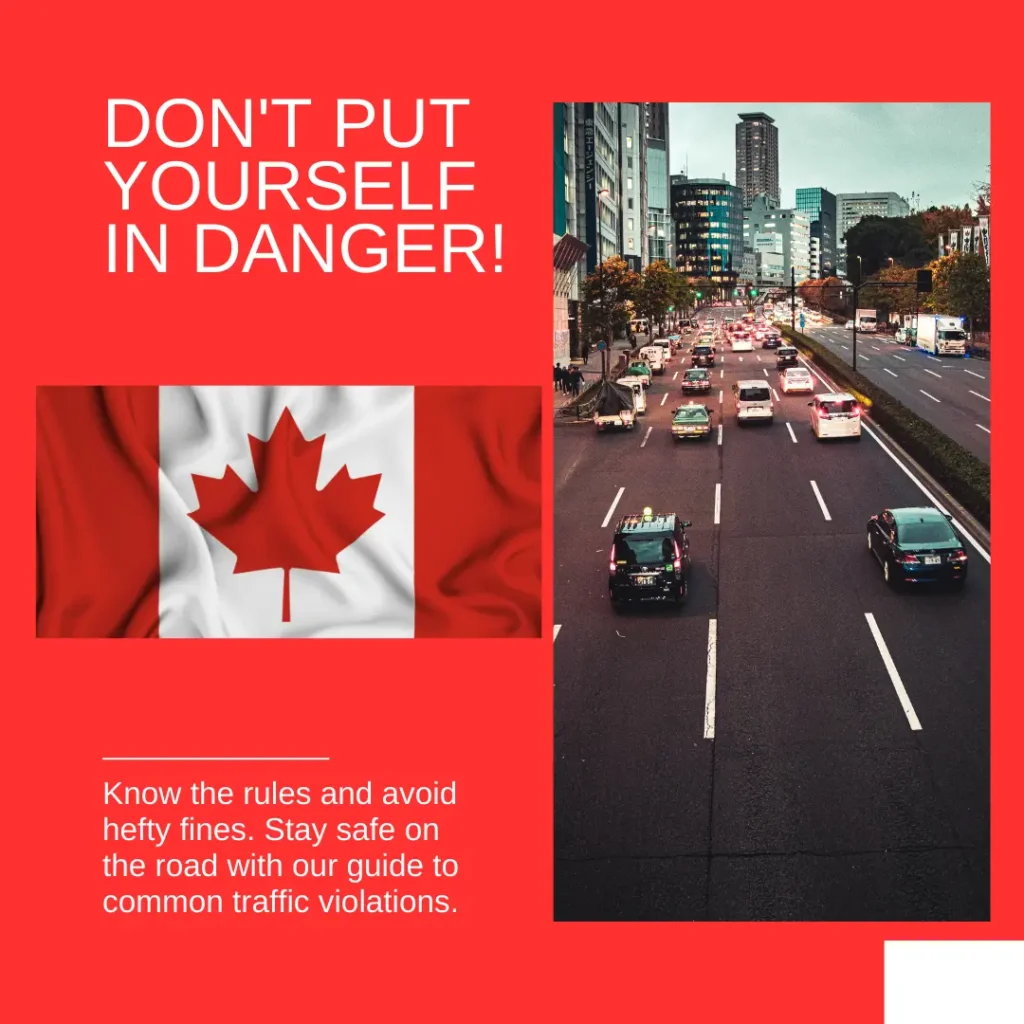
Parking regulation
Parking regulations vary from municipality to municipality in Canada. They are intended to ensure pedestrian safety, reduce congestion and manage the orderly usage of parking spots. The regulations usually cover time limits, parking zones and parking hours. Signs indicating parking restrictions, such as those in residential zones, commercial areas and public places, must be obeyed by drivers. Parking violations, like parking in a no-parking zone or exceeding the time limit, can result in hefty fines and/or towing. Parking regulations must be understood and followed to ensure that parking spots are used efficiently and effectively.
Child Car Seat Laws
The child car seat law in Canada is a stringent measure designed to ensure the safety of children during travel. The laws stipulate the type of booster seat, car seat, or other restraint system that is required for a particular child based on their age, height, and weight. Infants and toddlers are usually secured in rear-facing car seats. Older children can transition into forward-facing car seats or booster seats. It is important to ensure that the child has adequate protection for his or her size and developmental stage. Parents and caregivers should be familiar with and follow the regulations of their province or territory. Failure to comply with road rules and fines can result in penalties, highlighting the importance of prioritizing safety for young passengers.
Importance of Road Rules in Canada
Safety Road rules are designed to improve the safety of everyone on the road, from drivers and passengers to pedestrians and cyclists. Speed limits, seatbelt requirements and traffic signals are all designed to reduce accidents, injuries, and deaths.
An Orderly Traffic Flow Traffic Rules provide the framework to ensure an orderly traffic flow. It includes rules for the right-of-way, lanes, and traffic signals. These guidelines help to prevent congestion, as well as ensure smooth, efficient vehicle movement.
Preventing Reckless Driving: Road rules and fines are used to deter reckless driving. The penalties for speeding, distracted driving and impaired driving serve to deter individuals from engaging in activities that are dangerous to them and to others.
Accountability Road Rules establishes a standard that is expected of all drivers. The use of fines and penalties is a way to make individuals responsible for their driving. It is important to maintain a driver’s sense of accountability.
Vulnerable road users are protected by The rules governing crosswalks, schools zones and areas where vulnerable road users, such as cyclists and pedestrians, may be present. These rules help create a safe environment for all, even those more vulnerable to injury.
Unanimity: Although road rules vary from one province to another, having common guidelines and principles helps drive expectations uniformly across the nation. It is especially important for people who move between regions.
Legal framework: road rules are a set of legal guidelines that law enforcement can use to monitor and regulate traffic. This legal framework is used to enforce fines and penalties for violations, and to maintain public order.
How strict are speed limits in Canada?
In Canada, speed limits are enforced differently in each province and territory. The goal is to promote road safety. Speed limits are enforced with a high degree of strictness, reflecting the commitment of the government to reduce the risks of accidents while ensuring road user safety. The speed limits are set carefully based on the location and type of road, as well as considerations regarding public safety. In urban areas, speed limits are often lower to protect residents and pedestrians, while on highways, limits may be higher, taking into account factors such as traffic volume and the design of the road. Law enforcement uses a variety of methods to enforce and monitor speed limits, such as radars and speed cameras. The penalties for speeding can be fines, demerit point suspensions, or even imprisonment. Drivers must be mindful of posted speed limits and adhere to them. This is important for their own safety, but it also helps the larger goal of a safe and efficient transportation network across the nation.
Is it difficult to drive in Canada?
The driving experience in Canada can be varied depending on weather, local traffic laws, individual preferences, etc. Canada has a good road network, which makes it easy for drivers to travel within the country and between provinces. There are challenges, especially during the winter months when ice and snow create dangerous driving conditions. Winter tires are required to adapt to the reduced visibility on icy roads. The vastness of Canada makes long-distance drives common. This requires planning and awareness that breaks are needed during lengthy journeys. Drivers should also be aware of wildlife encounters in rural areas and the differences in traffic laws between provinces. Driving in Canada is generally safe, as long as you are prepared, follow local laws, and understand seasonal changes.
Is Canada left or right drive?
Canada uses the system of right-hand driving. Canada is a right-hand driving country. The driver rides on the passenger side. It is the same as the vast majority of other countries, including those in the United States. When driving in Canada, it’s vital that drivers are aware and follow this system of right-hand drive.

